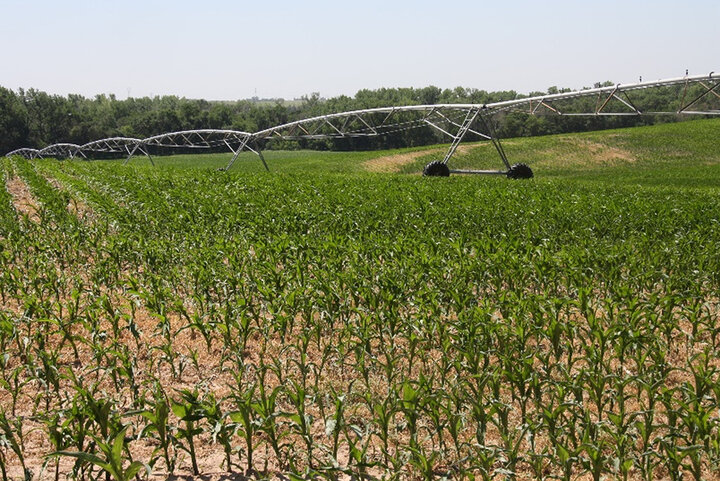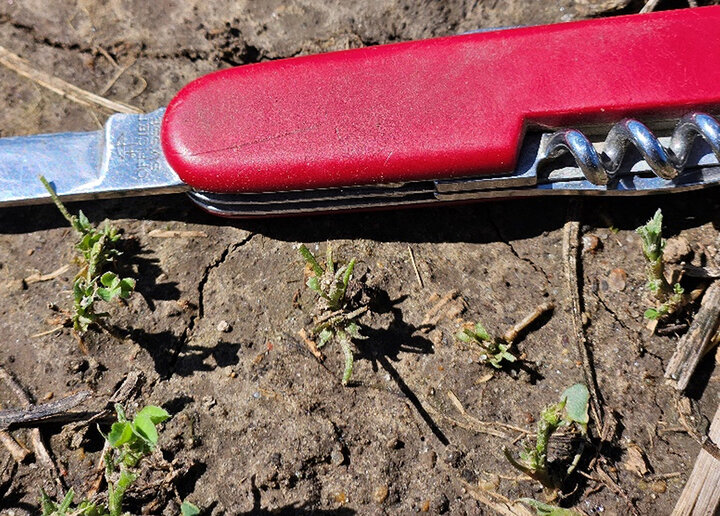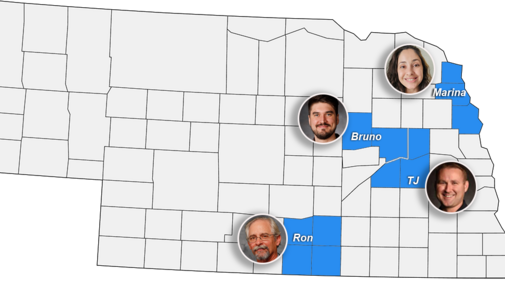Ron Seymour
Extension Educator in Adams, Kearney, Franklin and Webster Counties
Most of the spring crops have been planted and have emerged. Farmers are applying liquid fertilizer and are applying herbicide. Timely rainfall has been sufficient to keep the crops growing without irrigation. Soil moisture was found to a depth of two feet in an unused pasture area of Adams County. Eastern Kearney County and southwestern Adams County experienced a significant hail event on June 7.
Field corn — Growth stage varies from two to eight leaves. Most of the observed fields are in good to excellent condition. One late planted field had significant defoliation damage from armyworms and variegated cutworms. The field was previously growing a mixed cover crop, which was mechanically killed just prior to corn planting. It appears that the insects moved from the cover crop to the emerging corn.


Soybean — Growth stage varies from one leaf to four trifoliates. Most soybean fields are in good to excellent condition with a few suffering from wind or herbicide injury.
Wheat — Wheat is in the soft dough stage, with most fields in good to excellent condition. A few fields had a low level of leaf rust and a few others had scattered plants affected by wheat stem sawfly.
Pastures — Pastures are in very good condition.
Alfalfa — The fields are beginning to bloom. Alfalfa weevils and pea aphids continue to be common insect problems. The adult stage of the alfalfa weevils was common. Several newly seeded fields had damaged plants and reduced stands particularly in areas where henbit had been growing prior to planting. Burrowing bugs were abundant in these areas but did not appear to be damaging the plants. Sod webworms were also found in these areas where the plants had foliage removal consistent with damage that a grazing insect would cause.


TJ Prochaska
Extension Educator in Colfax, Butler and Polk Counties
Planting is complete in the region with some localized areas seeing a replant. After hard, spotty rains over the previous few weeks, the area was hot and dry over the last seven days.
Corn and soybeans are advancing well, with staging about V4 (corn) and VE-V2 (soybean) for much of the area.
Mother Nature has cranked up the heat and the forecast suggests that could continue into next week with several rain chances. Honestly, we could use the rain again across much of the region if we can avoid the severe weather. Herbicides are going down across the region.
The 2024 Weed Management Field Day is fast approaching at the South Central Ag Lab near Clay Center. Field day will be from 9 a.m.–1 p.m. Wednesday, June 26. It is free to attend, but registration is required to plan for the free lunch. If you are interested in attending, please register online.
Marina Duarte de Val
Extension Educator in Burt, Thurston and Dakota Counties
This week, Burt County experienced light rain showers, providing some moisture to the crops. The soybean crops are progressing well and are currently at the V2-V3 growth stages. Corn is developing steadily and is now around the V6 growth stage. There have been no signs of gall midge in the soybean fields, and I did not receive any reports of gall midge infestations from farmers in the area.
Bruno Lena
Extension Educator in Platte and Boone Counties
Planting (and replanting) is done for both corn and soybean fields. Some low spots showing crop damage to the prolonged waterlogging. A lot of spraying happening in the region as rainfall slowed down.
Corn
Growth stages: V1 to V6
Planting date: May 1
Crop water use for past week (accumulated): 0.64 inches
Soybean
Growth stages: V1 to V5
Planting date: May 1
Crop water use for past week (accumulated): 0.71 inches
Current Soil Moisture Status
Topsoil (0-6 inches): Decrease in available moisture due to no rainfall.
Deeper soil layers (6-36 inches): At full capacity with adequate soil moisture.

